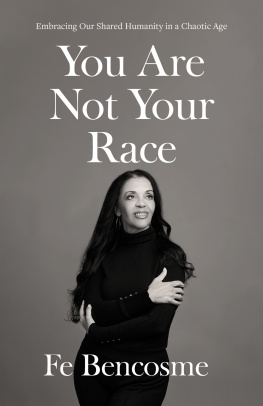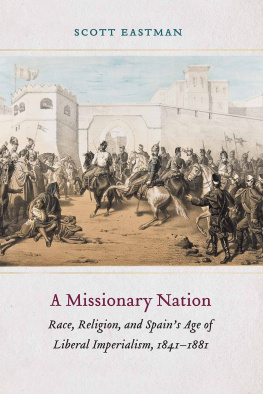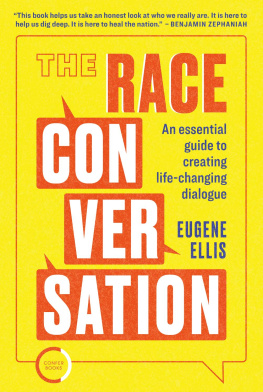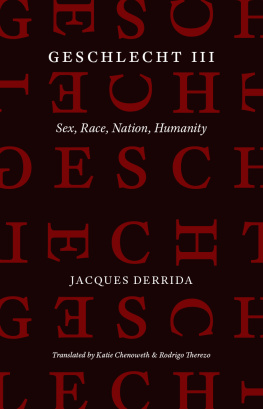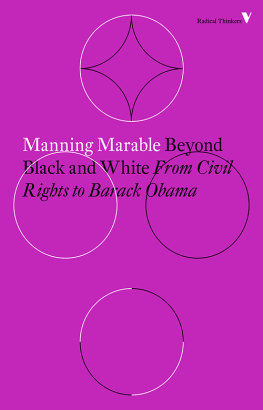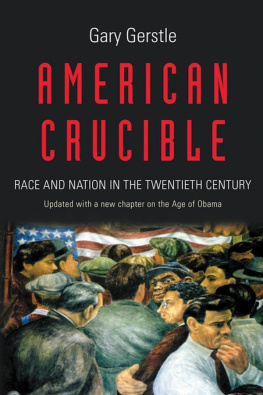ONE DROP OF BLOOD
ALSO BY SCOTT L. MALCOMSON
Tuturani: A Political Journey in the Pacific Islands
Empires Edge: Travels in Southeastern Europe,
Turkey, and Central Asia
ONE DROP OF BLOOD
THE AMERICAN MISADVENTURE OF RACE

SCOTT L. MALCOMSON

Farrar, Straus and Giroux
19 Union Square West, New York 10003
Copyright 2000 by Scott L. Malcomson
All rights reserved
Distributed in Canada by Douglas & McIntyre Ltd.
Printed in the United States of America
Designed by Jonathan D. Lippincott
First edition, 2000
Library of Congress Cataloging-in-Publication Data
Malcomson, Scott L.
One drop of blood : the American misadventure of race / Scott L. Malcomson.1st ed.
p. cm.
Includes index.
ISBN 0-374-24079-5 ISBN 978-0-374-24079-0
1. United StatesRace relations. 2. RacismUnited StatesHistory. I. Title.
E184.A1 M265 2000
305.800973dc21 00-024487
Grateful acknowledgment is made to The New Yorker and The Village Voice, in which some of the material in this book first appeared, in an altered form.
For Hannah and Benjamin
and in memory of Joe Wood
CONTENTS
All Things in Aboundance
Colonial America as Eden
A New Kind of Disorder
A Cherokee Utopia and the Rise of Racial Separatism 17301830
Welcome, Negro, Welcome
The Indian as Slave and Slaveholder
Grand and Greatthe Future State
Some Twentieth-Century Solutions to the Indian Problem
The Grand Ham
Racial Imagination in the Old World
Coal Black Is Better Than Another Hue
Love and Race in Shakespeares England
We Can Be as Separate as the Fingers
Segregation from the American Revolution to the Gilded Age
The New Negro
The Beautiful Despair of the Harlem Renaissance
The Essence of Whiteness
Spain, England, and the Colors of Empire
The Freest of All Human Beings
Westward Expansion and the Price of Liberty
The Ethiopian Opera
White Masks in Blackface Minstrelsy
ONE DROP OF BLOOD
THIS BUSINESS OF ANGELS
All the names, all those
together burned
names. So much
ash to bless.
Paul Celan, Chemical
T he North Canadian River slips through Oklahoma City, which marches away from it, to the north and south, in an almost unbroken grid. Like many towns in the southern Great Plains, Oklahoma City grew up at a time when irregular curving rivers had given way to the more rigid lines of railroads (themselves soon replaced, on this level terrain, by straight highways). People came to Oklahoma because land was cheap; and evidently land remains cheap enough, for Oklahoma City is not built up. Even close to the center, people live in houses on evenly spaced lots. In a hot and moody climate the lawns and gardens stay green. During the dust-bowl years, Oklahoma land went from cheap to worthless, and tens of thousands of Okies, the poorest of the white Depression poor, left for yet another trek west; but when the bad weather had gone the state dammed the rivers, creating the lakes that provide the water that makes the lawns of Oklahoma City possible. On a rectangle of land you can make for yourself a garden, a lawn, a home. Oklahoma City is among the most man-made of American towns; it is what we, leaving nature aside, create for ourselves. The proud city turns its back on the river, especially at night, when everyone has returned safely home and the river drifts quietly by like a winding secret.
In this orderly city a bomb brought down a government building one workday, killing 168 people, either immediately or after dehydration, suffocation, or dripping away enough blood to die. Every age and race of American was among the murdered; it was a democratic torturing death. More than a year later, the site of the building remained empty, surrounded by rickety Cyclone fencing. Twisted or stuffed into the fence were T-shirts with scrawled messages, business cards, flowers, toy animals, a childs pair of red sneakers. I visited the place on a sunny day in late autumn. A small but steady trickle of pilgrims passed slowly by this homemade shrine, reading certain messages out loud. Parents tried to explain matters to children. In a lot next to the fence stood an old tree, surprisingly unharmed, and an office chair; above them were two walls of buildings made useless by the explosion. On one, someone had painted a lengthy cry telling us that God demanded justice. On the other was the simple remark, We Should Have Looted. From the bombing site itself rivulets of reddish-brown water flowed beneath the fence and into the gutter, where visitors stood deciphering the T-shirt messages. One read, God Bless America and Help US ALL. We tiptoed and hopped about to avoid staining our shoes.
Many people had wedged sticks into the fence to form primitive crosses. There were dozens of them, and a few Christmas trees tightly bound to the wires. Were all of the victims Christian? There were many images and invocations of angels, and references to young victims who had become angels, and even some photographs of children now dead. I saw no pictures of adults, which was a surprise, because most of the bombing victims were not children. This business of angels came from the belief that children, upon death, unquestionably enter heaven. Adults, having no doubt sinned, cannot expect immediately to become angels. We are not assumed to be innocent. But it is worth recalling that children did not post these angel notices. In many cases their parents did. One family put together a holiday card with pictures of their two lost boys on one side and, on the reverse, a handwritten letter signed by those children from beyond the grave. The boys letter said they were happy in the other world and asked all who read it to pray, not for them, but for their familyfor the very adults who, in this world, had actually written the letter. When these adults speak of innocents they are talking to themselves, saying, We are innocent. This is one way to make sense of things.
Another strange detail of the popular shrine to the dead at Oklahoma City was that the pictures of victims, at the time of my visit, all portrayed white people, although many of the dead were not white. Perhaps nonwhite families had felt this was not a place for them to mourn, or that they were not members of this larger, stricken family. Certainly the national face of the tragedy had been a white face, that of a white child. Immediately after the bombing, a spontaneous assumption of many Americans was that the bomber must have been nonwhite and non-Christianin the event, an Arab Muslim man. This was another way to make sense of things. Within forty-eight hours several attacks took place against people who were thought, however vaguely, to be Arab Muslims. Once a young white Christian, Timothy McVeigh, was arrested, those many Americans who looked as if they might be Arab Muslims could harness their particular fear, and presumably those Americans who had suspected them swallowed shame.
Many of us cast the Oklahoma City bombing as a story in which innocent, childlike white American Christians were victims, a story of Terror in the Heartland. The heartland was by definition Christian, white, and blameless. The shrine at Oklahoma City was a spontaneous expression of this ideanot a media spin or a planned commemoration, just America talking to itself. Even those who were not present thereblacks, for exampleparticipated in that conversation by not talking. We heard much about unity, about coming together, after the bombing. Timothy McVeighif he is as he has been portrayed, a government-hating white Christian separatist sending a messagemade the event a perfect paradox: he killed a representative sample of Americans to send his separatist message, and we, in our confusion and pain, reacted by separating ourselves, each to his or her heartland. Thereby we did what he, a madman, wanted.
Next page

